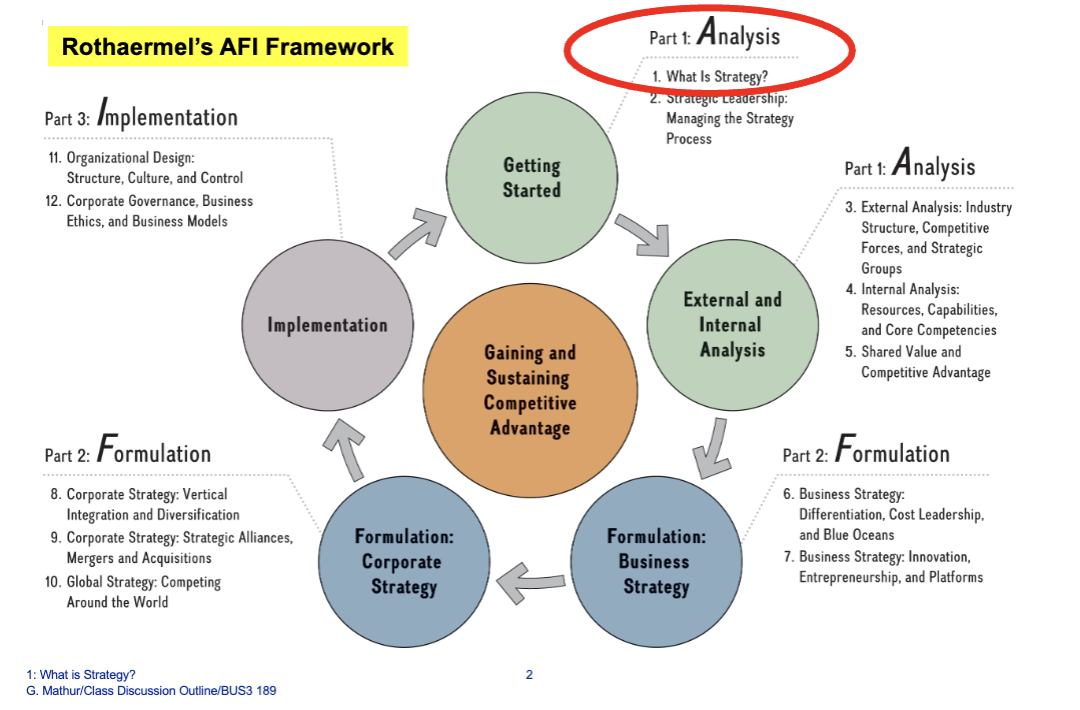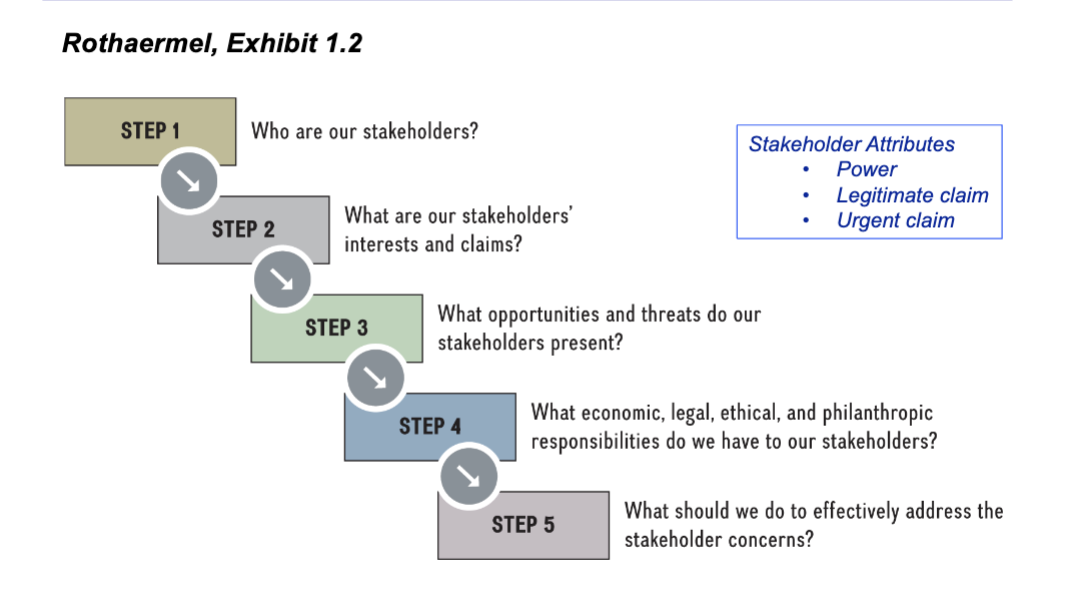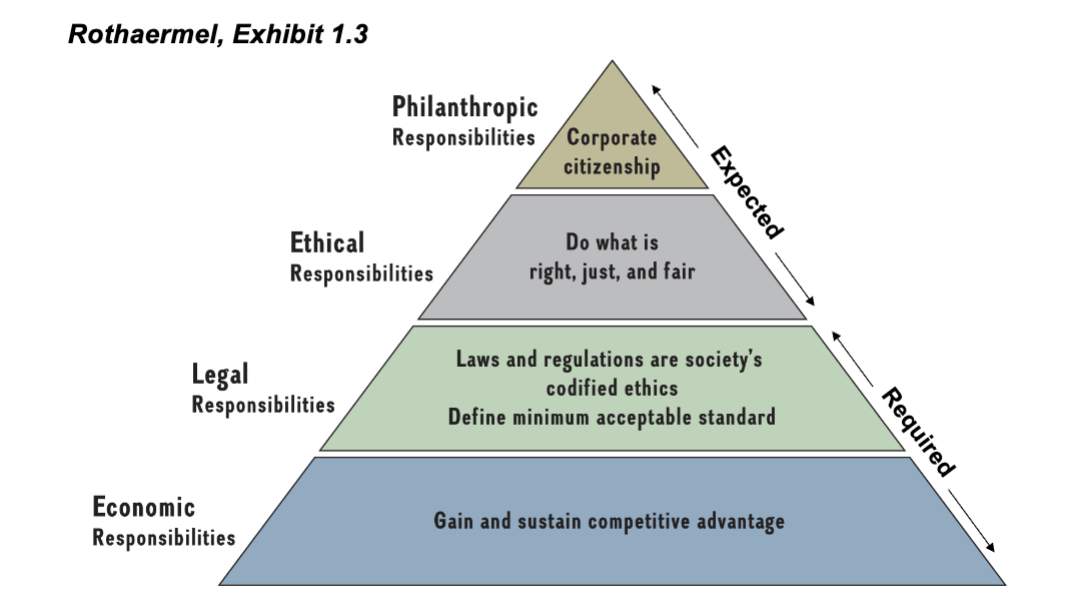BUS3 189 Ch 1: What is Strategy?
1/24
There's no tags or description
Looks like no tags are added yet.
Name | Mastery | Learn | Test | Matching | Spaced |
|---|
No study sessions yet.
25 Terms
Superior performance relative to other competitors or the industry average
Profitability Ratios (How profitable is the company?)
Activity Ratios (How efficient are the operations of the company?)
Leverage Ratios (How effectively is the company financed in terms of debt and equity?)
Liquidity Ratios (How capable is the business of meeting its short-term obligations?)
Market Ratios (How does the company perform in providing returns for shareholders?)
AND
Qualitative assessment of performance
A set of goal-directed actions a firm takes to gain and sustain superior performance relative to competitors
More value for customers at comparable cost or equivalent value at lower cost
An integrative process through which companies analyze, formulate, and implement strategy
Oversight is provided by the executive leadership
Everyone in the organization is involved



(Required) a business enterprise is first and foremost an economic institution. Stockholders have varying economic expectations
(Expected) strategic leaders are called upon to go beyond minimum legal requirements
(Expected) Under the idea of corporate citizenship, the idea that companies should voluntarily give back to society